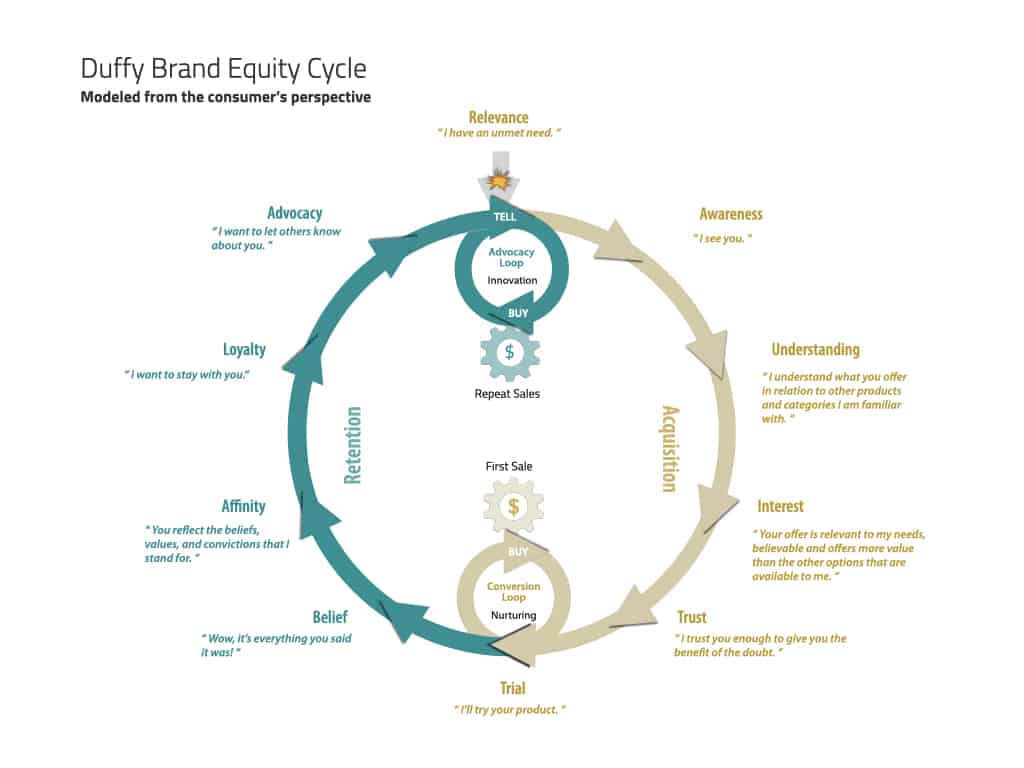The DOs and DON’Ts of strong brand positioning
Few things will help your brand build an engaging online audience faster than a strong position. Your brand’s position is an early gat...
29 Apr 2025 13329 ViewsFive of the most common brand positioning mistakes and how to avoid them
Few things will help your brand build an engaging online audience faster than a strong position. Your brand’s position is an early gatekeeper in the prospect’s journey to purchase and onto brand advocacy. Once you gain a prospect’s attention (i.e., “Volvo?”) and communicate your category (i.e., “The car company”) the next hurdle is capturing their interest with an attribute that is both differentiating and relevant (i.e., “Safe cars for families”). Volvo makes it look easy. But in fact, brand positioning is one of the most challenging and important responsibilities a marketer has.

Good brand positioning keeps the prospect moving toward a purchase.
Failure to position a brand well can send even the strongest products into obscurity. Consider Segway, Apple’s Newton, or almost any of Google’s products that stray from their core search and information retrieval competence (e.g. Google Video, Buzz, Wave, Answers, Plus, etc…). These brands entered the market with great products and extraordinary awareness advantages yet failed to gain consumer interest because they lacked a valid strategy to position them in consumers’ minds.
If you wonder how to position a brand effectively, below are five tips that will help you avoid brand positioning mistakes and help you craft the type of position for your brand that confers a strong competitive advantage.
Brand positioning DOs and DON’Ts
Do ask the right questions
What is a “well-positioned” brand? That’s a great question that great brands ask themselves every day. Basically, the quality of a positioning statement can be assessed by the answers to five key brand positioning questions:
- How true is the claim made in the position?
- How clearly does it differentiate the brand from other players in the category?
- How important is the difference to the target market given their priorities?
- How believable is the difference to the target market, given their existing beliefs and perceptions?
- How defendable is the position likely to be over time?
If the answer to any of these questions is anything less than “very” you may want to head back to the drawing board. And remember, your market situation is dynamic, so the answers to these questions change with it.
Do go to the source
When it comes to brand positioning, make no mistake; your target market is in complete control. Ultimately, they determine your brand’s position. Positioning simply refers to the way they have mentally tagged your brand in the category they believe it is competing in. They will rely on these tags in the decision process, so they are important.
As marketers, we can and should try to influence how they position our brands. The verb “positioning” refers to the marketer’s attempts to influence the position the target assigns their brand. But it is critical to understand that your brand’s position is something determined in your prospect’s head, not in your strategy document. So the logical place to begin crafting your position is not sitting around a boardroom with your fellow marketers. It’s out in the field talking to your ideal prospects until you are fluent in their unmet needs, beliefs, perceptions, and options.

Don’t confuse aspiration with reality
Ask a marketer what his/her brand’s position is. Nine time out of ten times they will read you a line from their brand strategy. That may be where they would like to be positioned, but it in no way answers the question you asked. The only way for a marketer to know how their brand is positioned is to survey their target market. The rest is just wishful thinking.
You can imagine the confusion that would ensue on a sailing journey if the navigator used the current location and the desired destination interchangeably. That’s what happens inside marketing organizations that state their positioning aspirations in place of their actual position. To help avoid this confusion, define these four dimensions for your brand and use them with your team:
-
-
-
- Reality: the objective truth about what the product or company behind the brand is and what it is capable of.
- Profile: how you portray that product or company brand to the target market.
- Perception: how the target market perceives/positions your product or company brand.
- Aspiration: how you would like the target to perceive/position your product or company brand to provide a strategic advantage.
-
-
If you want a formula for sustainable positioning, define and align the four elements above. The end game is this: What your brand is (reality), is what you say it is (profile), which is how people perceive it (perception), which is how you were hoping they would perceive it (aspiration). This is Brand Nirvana, an ideal state that is never actually reached, but one that strong brands perpetually strive for.
Don’t confuse your brand positioning statement with your slogan
Your brand positioning statement is not promotion. Once I was presenting a product positioning statement for a new brand at my client’s global headquarters. The head of engineering who was not involved in the positioning process, was walking by the glass-walled conference room and saw the slide. He turned red as a beet and stormed into the room. “You call that a positioning statement?” he barked, insisting it would never work because it “didn’t even rhyme”. Obviously he was confusing the brand positioning statement, which is a strategic statement intended for internal use with a tag line or slogan which is external communication intended for potential prospects.
For instance, the Nike Corporate brand positioning is about inspiring and motivating the athlete in all of us. Yet, the tag line is, “Just Do It”. The overall sentiment is the same in both but there are two different expressions and purposes.
Worry about making your positioning statement clear, specific, and accurate. Worry about checking the assumptions the statement is based on. Worry about how you will be able to defend this position moving forward. But do not worry about making the positioning statement “catchy” or “slick” and certainly don’t make it rhyme. One thing at a time. The word smithing should be done by professional writers, not your strategy team. It will come after the strategic decisions are made. Most position statements I see that are drafted as tag lines from the start are weak because too much attention has been put on the words and too little on the meaning. Don’t let form trump function.
Don’t try brand positioning at home
In general it is ill advised to try to position your own brand yourself or with internal resources. That statement may sound suspect coming from someone who makes his living positioning brands. You would be perfectly justified to ask “why not?” After all, you know your brand better than anybody, right?
Yes, but when it comes to positioning that familiarity is actually a liability. Like psychotherapy, dentistry and marriage counseling, the do-it-yourself approach is not going to work even though you’re closest to the subject matter. What you are actually paying your psychotherapist, dentist, marriage counselor and brand-positioning consultant for is distance that translates into greater experience, objectivity, and perspective that you can’t achieve on your own.
So, do not try to position your own brand. As in all the brand positioning examples stated above, it will be a painful and fruitless exercise. Find someone, like brand management services, outside your organization who has experience in this area whom you trust to speak plainly about your brand. Because, as positioning expert Blair Enns explains, “No matter how hard you try, you can’t read the label from inside the jar.”
These five tips can help you avoid common brand positioning mistakes when developing your brand positioning strategy. Of course there is a lot more required to develop a strong position so be sure to find a sparring partner who is up to the task. Creating your positioning statement and strategy may be hard work at first, but it will seem well worth it as you see how it streamlines your day-today brand management efforts and delivers results.
Like this post? You'll find more marketing insights in my new book: International Brand Strategy: A guide to achieving global brand growth, now available from booksellers globally. Order your copy here.






